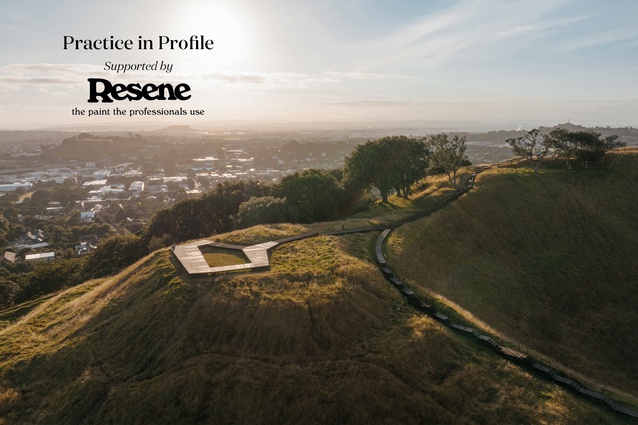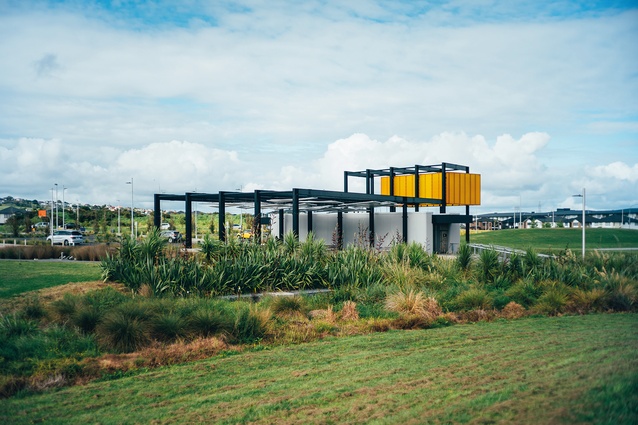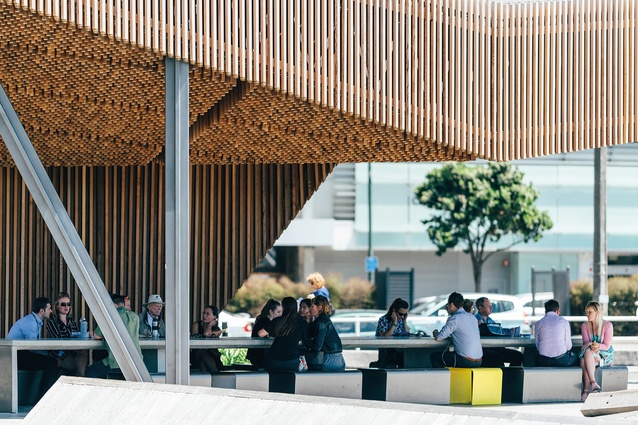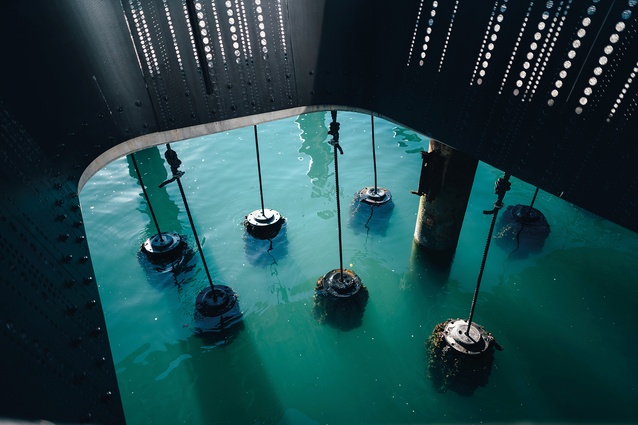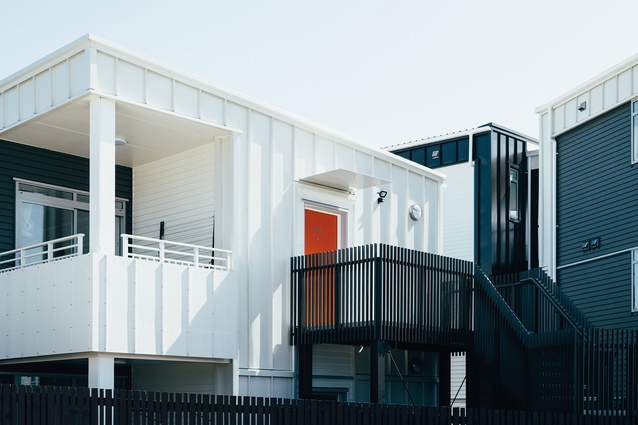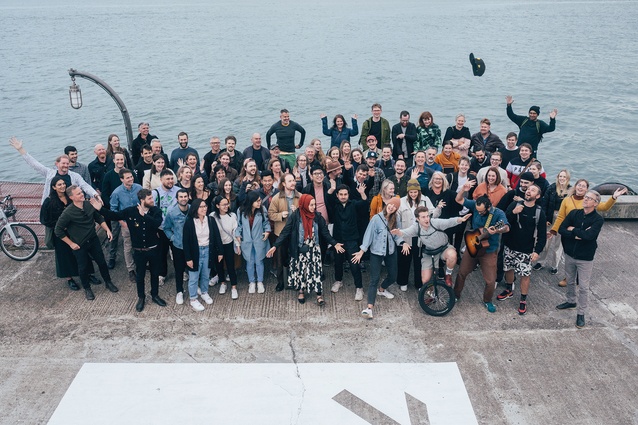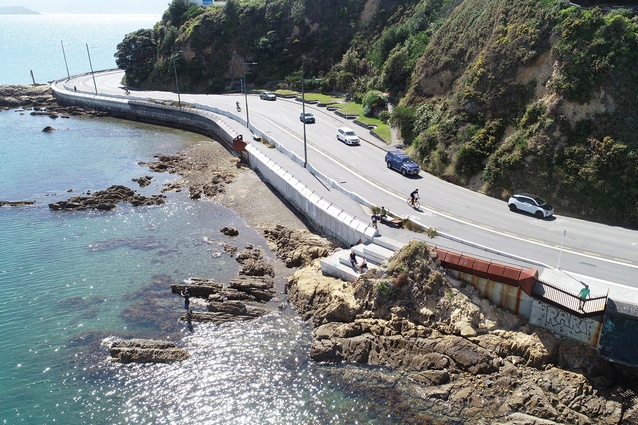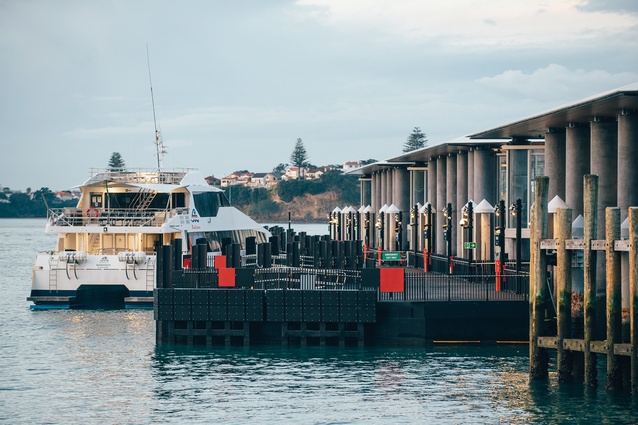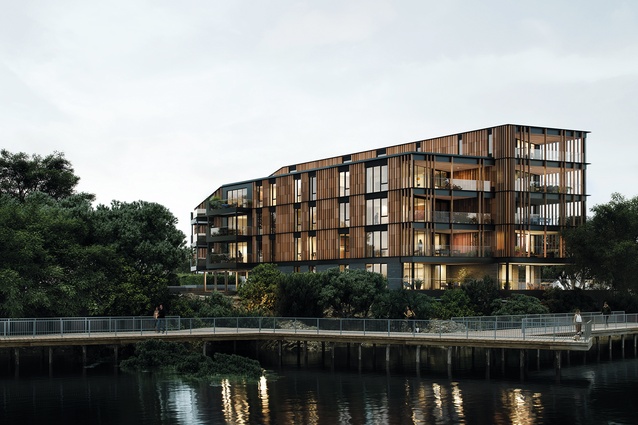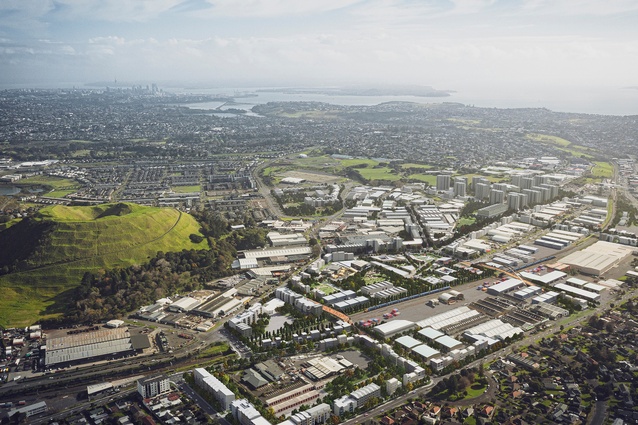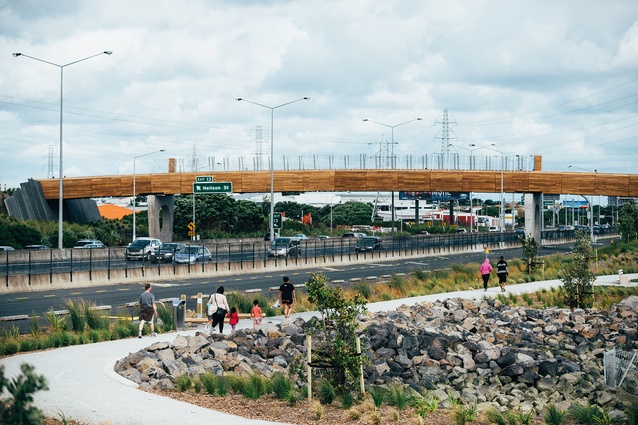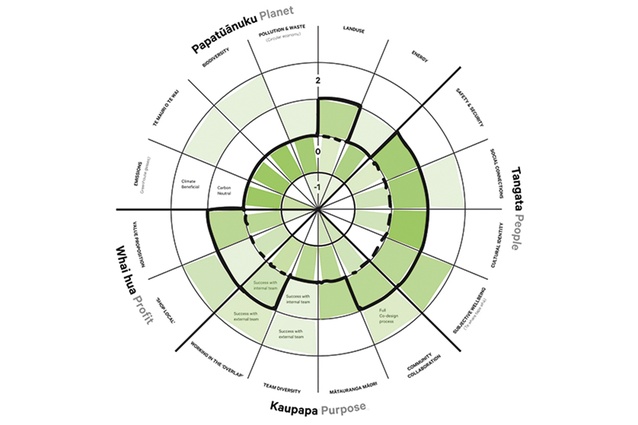Connecting land, people and culture
Geographically speaking, an isthmus is a narrow strip of land, bordered on both sides by water and connecting two larger bodies of land. (Tāmaki Makaurau is an isthmus, a strategic and much-fought-over strip of land at the narrowest point of Aotearoa, dividing the Pacific Ocean and the Tasman Sea).
Other definitions of an isthmus are a connective tissue, or something small that is part of something larger. All these meanings resonated with Isthmus Group’s founders and their aspirations to bridge design, planning, science and art.
With studio spaces in Tāmaki Makaurau, Te Whanganui-a-Tara and Ōtautahi, and a team of 90 designers drawn from architecture, landscape architecture and urban design, Isthmus is a dynamic, ever-evolving practice.
We are united by the kaupapa of regenerating Aotearoa by connecting land, people and culture. The studio operates as an open system with a distinctive approach to design that draws on our place in the world to drive positive social and environmental outcomes at all scales. While the challenges that face us today are quite different to those of three decades ago, when the studio was founded, Isthmus’ attitude and ability to grab strategic opportunities has enabled the studio to survive and evolve over the years. As we weather the current economic downturn and make plans for our future, now is a good time to look back at where we have come from.
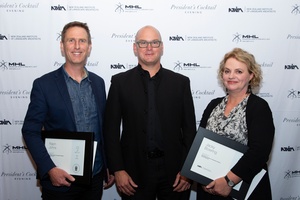
It was 1988 when four graduates from the landscape architecture programme at Lincoln University decided to challenge the status quo and create their own design-led practice, because one didn’t already exist. They set up their studio in a garage behind the Remuera Fire Station — a move that neatly coincided with the sharemarket crash. Not everyone was impressed with this display of initiative — a letter arrived from the New Zealand Institute of Landscape Architects, concerned that the four risked damaging the reputation of the still-young profession in New Zealand and urging them to cease practice and, instead, apprentice themselves to established organisations. This only hardened their resolve.
Subsequent years saw the practice do the hard yards, grow in experience and begin to work on increasingly complex projects — eventually taking leadership roles in a range of different types of work, including main-street and town-centre revitalisation projects, commercial developments, public parks and the iconic coastal projects of New Plymouth Foreshore and Oriental Bay. Isthmus’ founding values were expressed both in the firm’s physical work and in the organisation of the studio: open, not obviously hierarchical; and a place where thinking was encouraged, ideas shared and talent nurtured.
Through the 1990s and into the 2000s, the practice grew to become one of the pre-eminent landscape architecture practices in Aotearoa, with a large portfolio of award-winning public-realm projects that stood out with their confident design, refined detailing and integration of ecology, engineering and artwork.
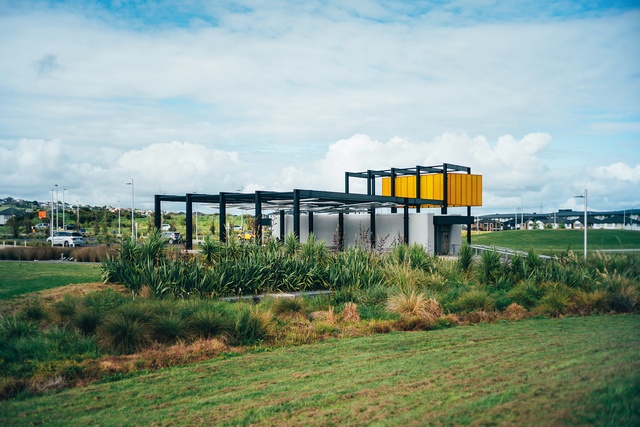
Barry Curtis Park in Manukau, delivered in stages over 15 years, was Aotearoa’s largest new park for more than a century. The design was inspired by natural and cultural patterns, such as volcanic geology, historical pā and defensive fortifications, and the stone walls and planting of the farms that once occupied the site.
Hobsonville Point was a once-in-a-career opportunity to design an entire new suburb — the mission was “to build a strong, vibrant community that sets new benchmarks for quality and accessible urban development with an environmentally responsible focus”. The studio worked on various components of Hobsonville Point for nearly two decades, from the overall masterplan framework and precinct design guides to the detailed design of streets, reserves, playgrounds and houses.
The experience in masterplanning and coding design was taken a step further in Ponsonby’s Vinegar Lane, where we led the development of a design framework for an ‘urban subdivision’ based around flexible, ground-up city building on individual freehold lots. The Design Manual stipulated the building envelope, development controls and a design review process, and required that different architects must be used for adjoining sites, ensuring variety.
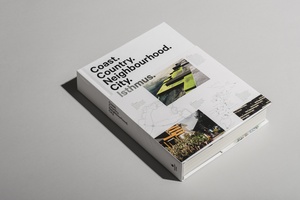
After 20 years of practice, the viability and resilience of the business was tested with the dual impacts of the global financial crisis and the exit of one of the founders. This caused the studio to shrink and rethink. The decision was made to close the Christchurch studio and begin a process of ownership succession. The new board invested time in strategy and hired its first CEO. As the economy started to move again, a new wave of projects enabled the team to grow design skills and confidence, backed by better management systems and processes.
We began working with editor Michael Barrett and Inhouse Design on an internal project that attempted to record and distil the history, philosophy and design thinking of the studio. This gave us the opportunity to stand back and reflect on the portfolio of work, and then see where we wanted to go next. The resulting book, Coast. Country. Neighbourhood. City., contained five essays and 25 projects. It created a solid foundation upon which to build the next generation of the practice.
Then we made a game-changing move — adding architecture. Expanding the studio with a new discipline has been a strategic play for many established New Zealand architecture practices but none had come from a landscape architecture background into architecture. Over the years, Isthmus’ masterplanning work had become increasingly urban and, with projects such as Hobsonville Point and Vinegar Lane, we were sitting at the top table with the opportunity to design some of the buildings. As well as the opportunity to grow the scope of our services, adding architects would give us the skills to extend our masterplanning capability and to be able to do the higher-density residential and town-centre work that we wanted.
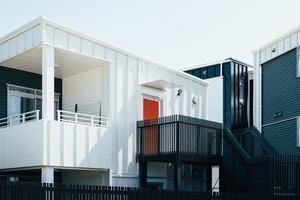
We hired Andre de Graaf, with whom we’d collaborated on Hobsonville for a number of years. He shared our values — creative, curious, authentic and very tenacious. In addition to Andre having skills as an urban designer, he was tasked with creating a vision for architecture at Isthmus. Overnight, Isthmus went from being a big fish in a small pond (as landscape architects) to a whitebait in an ocean of architecture.
The challenge of starting up a new discipline created energy and excitement associated with learning, aiming high and creating something fresh. The addition of architects to the studio meant that we could develop residential masterplans from the inside out, as well as the outside in. Starting with the experience of home and the people in it, we could arrange the typology and layouts of the housing to respond to the sun, the topography and the street. And we could then align the streets and reserves to maximise accessibility and amenity to create safe and friendly neighbourhoods. Everything was nested across scales, zooming back and forth between the macro and the micro, switching between the figure and the ground, with designers from different backgrounds in the same studio debating how it all works together.
Architects broadened and deepened our urban design work and started to explore our own architectural approach. The initial team of six created a vision for “Architecture that is of its place, simple and uplifting. Architecture that delights the senses, cherishes materiality, celebrates craftsmanship. Architecture that is of this place.”
The first completed buildings were small pavilions that were embedded within landscape-led projects: for example, the kiosk that symbolised the first phase of the regeneration of Porirua’s Town Centre, the pavilion at North Kumutoto on Wellington’s waterfront, the sports pavilion within Barry Curtis Park and the Akoranga Learning Pavilion at Wellington’s Discovery Garden. These modest buildings allowed the studio to explore vertical design within the landscape, to integrate landscape and architectural detailing and construction techniques, and to push the boundaries of collaboration.
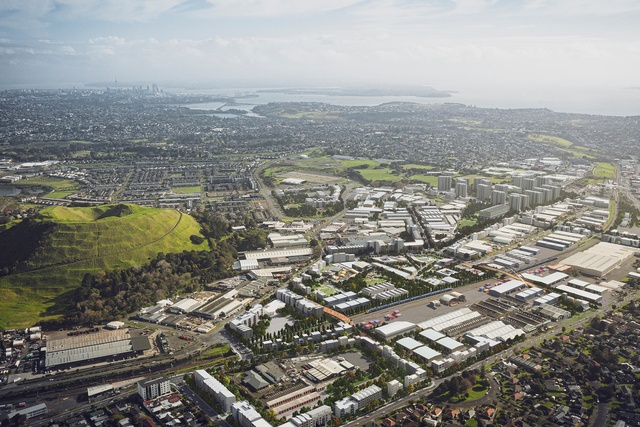
Alongside these bespoke structures, our architects worked on a baseline of residential work that assisted with the Auckland housing crisis. A raft of developer-led housing in Tāmaki honed design systems and processes. When David Irwin invited his old friend and collaborator Rewi Thompson to join Isthmus in 2015, he described it as “a dream come true”. Rewi helped focus the studio on our kaupapa, bringing a deeper sense of meaning and purpose to the work, with a special attention to housing.
Quietly leading and teaching, Rewi worked into the masterplan for the suburban regeneration of Northcote, and thoughtfully conceptualised forms of social housing based on people and place. With the Everyday Home, a new kind of state house, and Cadness Apartments with open breezeways for elderly residents, Rewi showed us the value of land, family and community over aesthetic. To Rewi, the home was all about a feeling, and about allowing people to feel safe and be themselves. Losing him so soon in our design journey was really tough and, perhaps, we subsequently lost our way in the resolution of Rewi’s designs, overdesigning the details rather than focusing on the basics of human comfort.
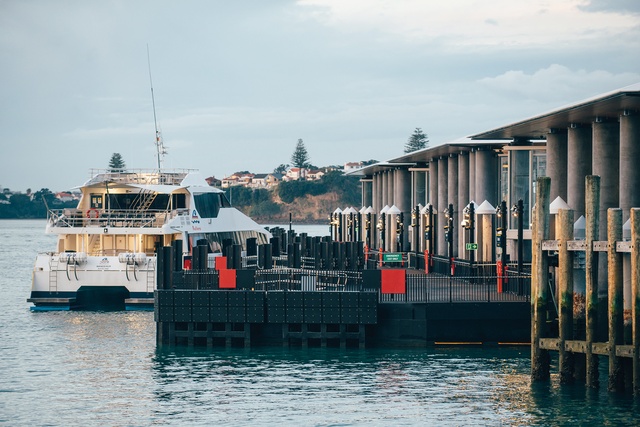
Our collective skills and experience approached critical mass; the buildings we were designing stepped up in scale, density and complexity. The design for the Dominion and Valley Road Apartments for Eke Panuku pushed residential intensity on a site with great links to public transport — resource consent was approved but the project remains unrealised. Then came the Auckland Ferry Basin, an opportunity that grew out of winning the design for a new waterfront public space, Te Wānanga. As part of the Downtown Programme, the fast-track project to expand ferry infrastructure was designed in partnership with mana whenua and utilised offsite prefabrication for the major components, giving the members of the team the opportunity to demonstrate their design talent on a complex construction programme.
As tends to happen with any new venture, after the initial momentum and quick wins, our rate of progress seemed to slow, despite putting in more effort. Fully integrating architecture within our existing studio was difficult but we doubled down and pushed through the messy middle. We hired the next wave of experienced, technically skilled architectural talent, invested in BIM, Safety in Design and QA, and upskilled in risk management, accessible design and sustainability. We refined and consolidated our direction to create ‘architecture that builds community, rewards adventure and transports us’. And then the pandemic happened.
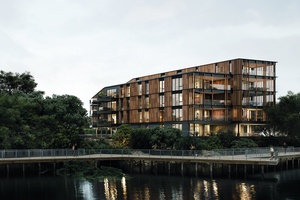
As we worked our way through the impacts of COVID-19, along came the next wave of architecture projects. We took on Jimmy’s Point apartments at Hobsonville Point and Arthaus, a boutique apartment building in Parnell and we won a large-scale social housing development at Epuni with Kāinga Ora. This time, we had better systems and processes, and a new tool that we’d developed called Te Kāpehu — The Project Impact Compass. We developed the compass to help frame and measure project aspirations around sustainability and impact, based on the quadruple bottom line of People, Planet, Purpose and Profit. When we started work on the developed design of the Evans Bay Parade social housing development for Kāinga Ora, we used Te Kāpehu to set project goals with the client, which ultimately resulted in switching the structure to low-carbon CLT construction.
While the number of built examples of Isthmus architecture is slowly growing, above all, the last few years have proven that embedding architects has resulted in a more nuanced, more sophisticated approach to urban design. Architects have brought their understanding of construction techniques, typologies, ownership structures, development models, operational requirements, shape factors, spatial planning, structural systems, internal layouts, service cores, sunlight access and lettable area to create future-focused masterplans that work.
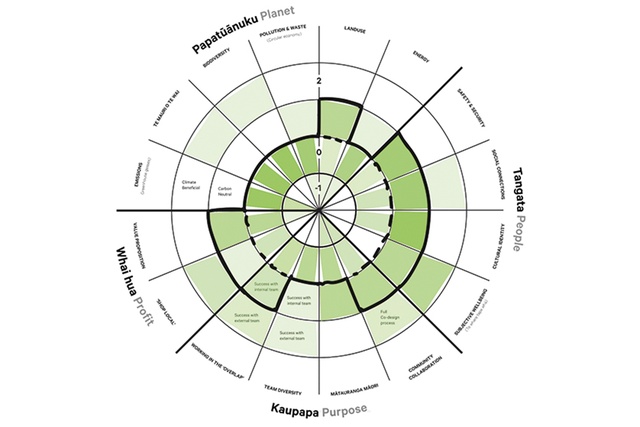
Architecture thinking has bolstered planning and landscape architecture thinking. All these threads came together in the Timaru CityTown Strategic Framework, the first time that a ‘tactical urbanism’ approach to masterplanning and urban regeneration had been tried in Aotearoa, and we learned some valuable lessons on the ground about what worked, and what didn’t. Our team of urban designers, architects, graphic designers and landscape architects developed and tested a place strategy to bring life back into town and invite urban pioneers.
Three and a half decades since ‘Isthmus Environmental Planning and Design’ opened its garage door, Isthmus is still engaged in the process of bridging and connecting. We are connected with ideas, movements and challenges that extend well beyond the shores of Aotearoa, fully engaged in resolving gnarly design problems and, ultimately, playing a role in answering questions about the ways in which future generations will live in this place. As a practice, we keep pushing, evolving and leading. To regenerate Aotearoa — and tackle the big issues such as climate change, the housing crisis and biodiversity collapse — we need to balance understanding, respect and humility with optimism and tenacity.
David Irwin has been writing “Land, people, culture” on the front page of each of his sketchbooks for ever but, over time, the meaning and interpretation of this design philosophy has evolved. Culturally, we are examining what sort of place we believe Aotearoa can become and how our mahi can regenerate our land, people and nature. Integrating architecture within the studio has caused us to test our thinking, and extend and deepen our commitment to, and respect of, the land. As we move beyond sustainability to designing regeneratively, we are constantly asking ourselves: how can we tread lightly on the land, respect our culture, nurture community well-being and give something back to all of these systems?
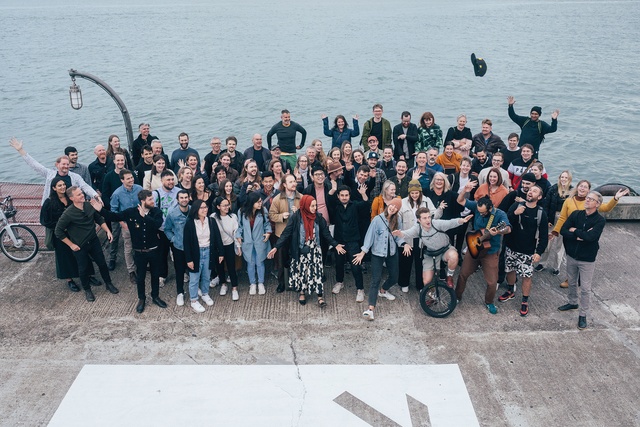

Isthmus is an established design practice whose kaupapa is to regenerate Aotearoa by connecting land, people and culture. The three Isthmus studios in Tāmaki Makaurau, Te Whanganui-a-Tara and Ōtautahi integrate landscape architects, urban designers and architects.

